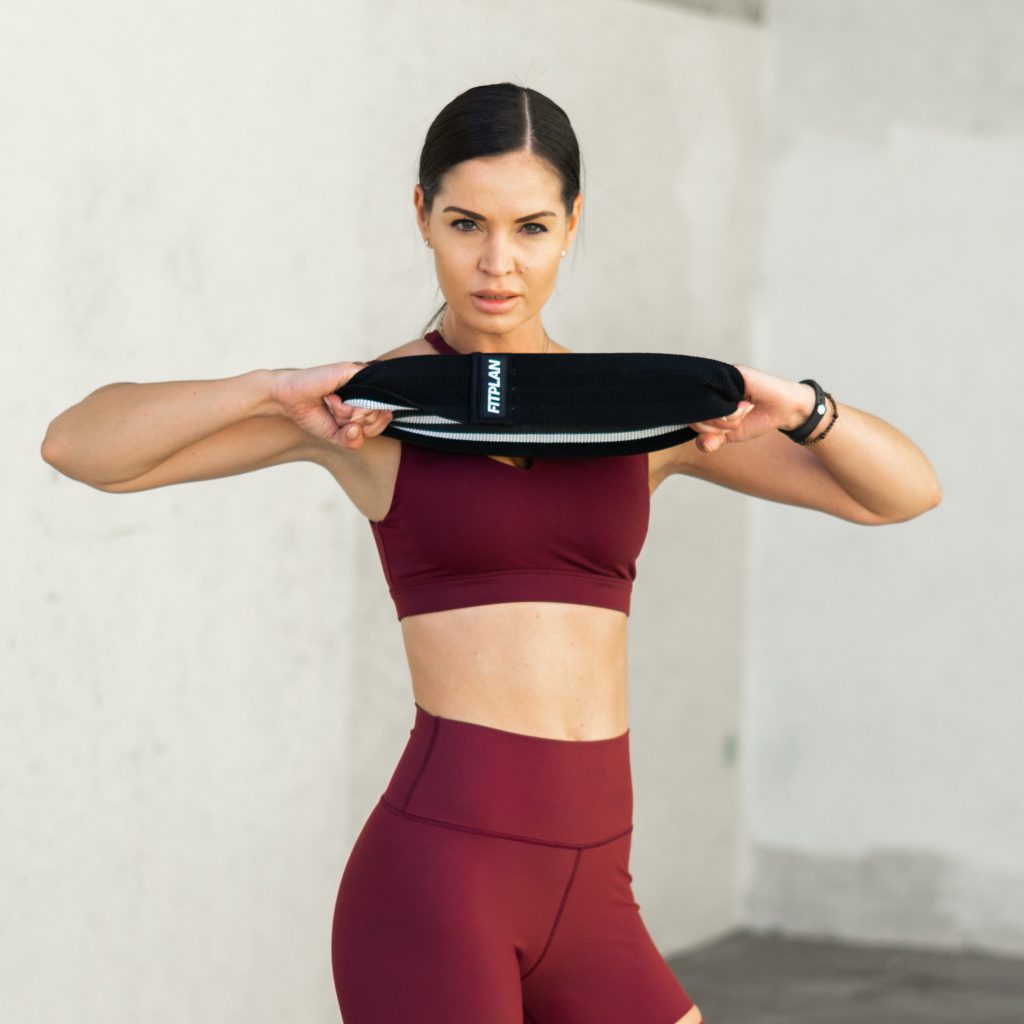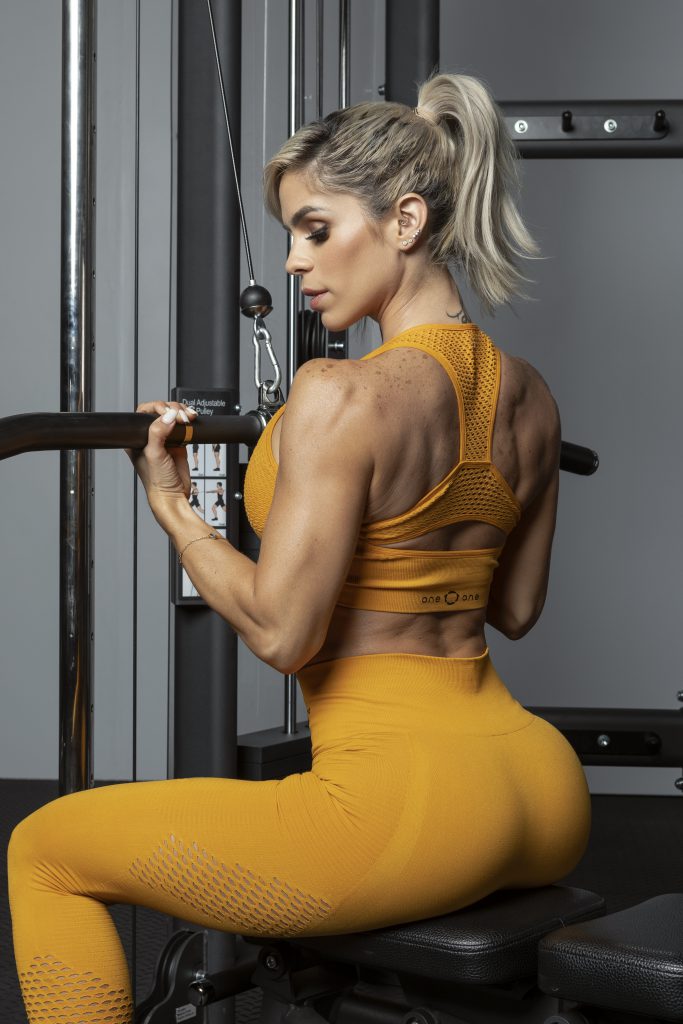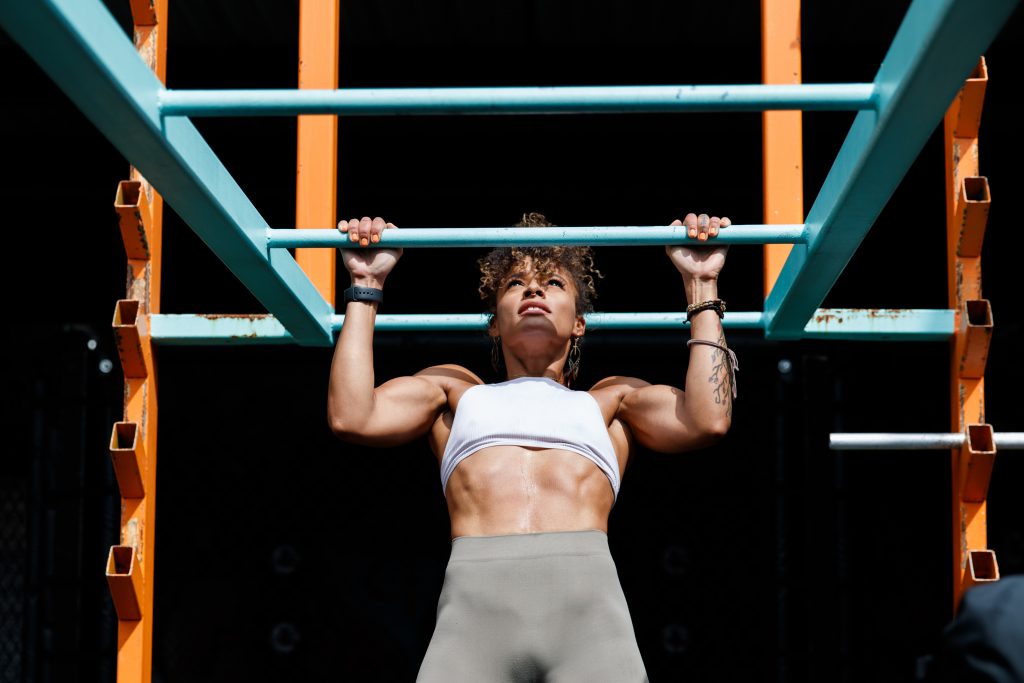Bodybuilders and weightlifters call lats the wing muscle. The latissimus dorsi is the largest muscle in the back and when it is well-developed, it gives your lower back a shape similar to a bird or bat with its wings outstretched. Not only will that give you a toned back to match fit shoulders, arms, and pecs, but it will also build important functional strength in an area that many people ignore.
Understanding the way the latissimus dorsi muscle works is key to targeting it effectively. We’ve chosen three of the best exercises for isolating your lats so you can build that coveted wing muscle and execute complicated lifts more effectively.
(Note: Want our elite trainers to help you tone and strengthen your back? Start your Fitplan free trial today!)
Function of the Latissimus Dorsi
The lats extend from the bottom half of the spine and spread across the back of the torso into the armpits. The latissimus dorsi is a broad and superficial muscle, which means it’s clearly visible. Since it is such a large muscle, building strength in the lats is critical for a toned back.
Lats function mainly to bring the upper arms in toward the torso and back behind the body. There are tons of upper-body exercises that require these movements. Real-world activities that require lifting, applying pressure with the hands, and pulling all activate the latissimus dorsi as well.
Your shoulder joint is heavily impacted by the condition of the lats. Moving your shoulder in just about any direction takes strength from the latissimus dorsi and weak lats make the shoulder joint more prone to injury. There aren’t many upper-body strength training exercises you can complete with a hurt shoulder, so if you do manage to overtrain that crucial joint, you can kiss your gains goodbye for weeks or even months.
Other Key Back Muscles
Although the three exercises in this lats workout guide focus on the wing muscles specifically, there are some other important muscles in your back that you should also target to build back mass evenly.
1. Trapezius
Your traps extend from your neck down to your shoulder blades. Traps are also fairly wide, extending across the upper back to the tops of the shoulders. Their main function is to stabilize and move the scapula, which is used when you squeeze your shoulder blades together or throw an object.
The trapezius muscle is also a key postural muscle, which means it will help you stand tall. For people who sit for long periods or stare at a computer screen all day for work, developing strong traps will avoid the worst effects on their posture.
Of the key back muscles here, the trapezius is the most important. Any time you shrug, twist your arm, tilt and turn your head and neck, or move your shoulder blades, this muscle is the main actor.
2. Rhomboids
The rhomboids extend from the spinal column to the scapula muscle. Similar to the delts, the rhomboids help pull the shoulder blades together. They also move the scapula down and essentially hold it in place.
Your body has a rhomboid major and a rhomboid minor. They work together to perform the downward pull of the scapula and hold it in place, primarily when the trapezius is contracted.
3. Erectors & Lower Traps
The traps have two sections. The lower traps aid in the action of the upper traps, but they also engage in a separate function, which is to depress and retract the scapula. The erectors, or erector spinae, work to rotate your back and keep it straight.
If you’re concerned about posture and building muscle mass in your neck, these muscles are key. Weakness in either area significantly undermines the power of your posterior chain and could very likely lead to injury during more technical workouts like deadlifts.
Helpful hint: Check out our Kettlebell Power Fitplan to build muscle and strength in your posterior chain!
Warm-Up Exercises for Wing Muscles
You should never jump straight into the heavy main exercises and back day is no exception. Before you begin your lat workout routine, make sure to run through a few of the following warm-up moves as well.

1. Banded Pull-Aparts
Nothing beats pull-aparts to prime your lats and deltoids for a hard workout. All you need is a resistance band that’s elastic enough for you to stretch until your arms are fully extended out to each side.
Stand with your back straight and make sure your shoulders aren’t rounded. Plant your feet about hip-width apart and grab a section of the resistance band in each hand. The closer together your hands are, the harder the pull-apart will be.
Next, you do just what the name implies. Pull the band apart until your arms are completely straight and even with your torso. Slowly move back to the starting position.
Run through 10 – 15 of these pull-aparts but make sure you’re not going too fast. If you don’t feel the burn in your lats and delts, you’re either going too fast or the band isn’t resistant enough for you.
2. Kneeling Shoulder Rotations
Add this warm-up exercise to the list of moves that make you feel awkward at the gym. The prone version that has you lying flat on the ground is even stranger, but both of them prime your lats better than almost any other exercise.
For the kneeling version, get down on one knee and clasp your hands together behind your head. Your leading knee should form a 90-degree angle. What you want to do to execute this move is turn to the side of your leading knee to the maximum degree without going too fast. Return to the starting position and repeat for 10 reps.
Finish all the reps on one side before leading with the opposite knee and completing all the reps on that side.

3. Lat Pulldowns
You can execute this move with resistance bands or a dedicated lat pulldown machine if you’re at the gym. Of the lat warm-ups in this guide, the lat pulldown with the pulley machine is most like a proper exercise in its own right. So we’re sticking with the banded version for the warm-up here.
Attach your resistance band to a high anchor point. A doorframe is a great option, but a hook or even an overhead bar of some kind will work just as well. Just make sure the band won’t slip off the chosen anchor point and whack you in the head.
Once your band is attached to the anchor point, kneel down on both knees and take the handles or the ends of the bands in your hands. Your arms should be fully outstretched in the starting position. Pull down the band while maintaining a slight bend in the elbow.
If you bend your elbows throughout the move, your arms will bear the brunt of the action. Prevent movement in the elbows and your lats will be doing all the work. Go through 15 of these pulldowns for a warm-up set.
How Often Can I Workout My Lats?
Your lats need a bit more time than some of the other muscle groups to recover. That makes sense because it is such a broad muscle.
Many back muscles are also involved in movements of upper-body exercises that are principally used to target the arms and shoulders. For that reason, you shouldn’t be doing these wing exercises right before you go into more technical lifts or an upper-body superset.
Go through these warm-ups and wing muscle workouts two days a week, leaving 2 – 3 days for recovery. That recovery is essential for hypertrophy, which is what you want to get a broad back and toned wing muscles.
Helpful hint: Get ripped upper-body with the exercises in our Complete Physique Fitplan!
3 Best Back Exercises for Killer Wing Muscles
While many exercises will give you a great back workout, there are just a few that target your latissimus dorsi and get you the toned V-taper you’re looking for. Throw these exercises into your twice-weekly back workout to develop killer lats.
1. Bent-Over Barbell Row/Inverted Row
The bent-over version of this move recruits almost all the muscles in your back and posterior chain, including lower body muscles like your glutes, to perform the pulling motion. Since your body will also have to remain stable during that pulling motion, key stabilizers in the lower body and spine get a great workout in addition to your lats.
Meanwhile, studies show that the inverted row leads to more latissimus dorsi activation than either the bent-over barbell row or a standing one-arm row. It also avoids loading the lumbar spine.
How to Do the Bent-Over Barbell Row
This classic bodybuilding move starts similar to a deadlift but you’ll probably be doing more reps. Keep your movements controlled and regular. If you speed up, you could be losing out on some great wing gains.
Load up your barbell with an appropriate amount of weight. Underestimate if you aren’t sure and add weight if the move is too easy.
Stand with your feet about halfway under the barbell about shoulder-width apart. Bend your knees and hinge at the waist so that your forehead angles toward the floor. Maintain a straight back with your neck and spine in line throughout the exercise.
Grab the barbell with your hands a bit more than shoulder-width apart in an overhand grip. Brace your core, squeeze those shoulder blades together and lift the barbell so that it’s up in front of your shins just shy of your knees.
That’s the starting position. Lift the barbell until it touches your sternum and then lower back to your shins to complete one rep.
Tips for Bent-Over Barbell Rows
Pause at the top of the move for some isometric benefit.
Lead the pull with your elbows to concentrate the effort on your back muscles.
When you pull your elbows back, they should form a 90-degree angle.
If you don’t have access to a barbell, dumbbells, or even a resistance band to do bent-over rows, you can use inverted rows with a low horizontal bar or a coffee table. Anything you can hold onto and still have your back off the ground will do. The higher the bar, the easier this bodyweight move will be.
Your lats and traps will get a good workout from this exercise and your biceps will also get some secondary attention.
How to Do Inverted Rows
Slide your feet underneath the bar and get an overhand grip on the bar. Take a wide grip, about shoulder-width apart. Think of this move as an upside-down push-up to get an idea of how the movement will work.
Once you have the grip, hang with your arms straight. Your back should be off the ground and your heels should support the weight of your lower body. Once you’re hanging, lead with your chest while you pull your elbows toward the ground to lift your body weight.
When your chest touches the bar, pause briefly and then lower to the starting position to complete one rep.
Helpful hint: Burn body fat without additional gear during our Bodyweight Essentials Fitplan!

2. Pull-Ups
You can do pull-ups with a pull-up machine, assisted pull-ups with a resistance band or a personal trainer to spot you, or even dead hangs if you don’t quite have the pull-up strength to get through a whole set of traditional pull-ups. Whatever way to go about doing your pull-ups, they are the king of bodyweight exercises and they are without a doubt the best way to get ripped wing muscles.
All the major muscles of your back are activated by pull-ups. Unlike chin-ups which isolate the biceps and triceps more, the overhand wide grip of pull-ups gets the back and shoulders involved much more.
If you haven’t worked your way up to your first pull-up yet, check out our pull-up guide for some tips.
How to Do Pull-Ups
Find a pull-up bar or a pull-up machine if you’re at the gym. Doorframe pull-up bars also work, as do homemade solutions like broomsticks as long as they can support your weight.
Stand underneath your pull-up bar of choice and grab onto it with a wide overhand grip. Your hands should be just a bit wider than shoulder-width apart. Lift your legs by bending the knees until both of your feet are off the ground. This is called a dead hang and it will be your starting position.
Lift your body weight through your shoulders. Imagine you’re pulling the bar to the floor rather than pulling yourself up to get greater back muscle activation. Continue rising until your chin clears the bar.
Pause briefly at the top and then return to the starting position. Continue doing reps without putting your feet back on the ground. Most adult males in great shape can do 8 pull-ups, while women can typically do 3 – 4.
3. Lat Pullover
This is one of the most versatile lat exercises on this list. You can do it with a flat bench, a medicine ball, or a machine. Use dumbbells, a kettlebell, or resistance bands to give your lats a challenge. The pecs will also be activated with this exercise, so you’ll be getting an even front and back workout.
How to Do the Lat Pullover
Sit on the narrow end of a flat bench and place both feet flat on the ground. Take a pair of dumbbells in your hands and lie flat on your back as if you were about to do a bench press. If you’re using a barbell instead, hold it in your lap as you lie down and bring it up to your head afterward.
Hold the weight above your chest with both arms straightened out. Rather than lowering the weight to your sternum as you would in a bench press, you’re going to move it back so that it goes back behind the top of your head. Keep your core engaged throughout the motion and take your time getting the weight to its lowest point.
Make sure you don’t lock your elbows to avoid injury. Once you have the weight at its lowest point, slowly return to the starting position to complete one rep. To target your lats more than your chest muscles, try to point your elbows at your feet rather than out to both sides.
Helpful hint: Try The Titan Challenge to take your muscle gains to the next level!
Conclusion:
Back muscles on the whole are too often ignored during workout sessions. If you want a well-rounded bodybuilder’s physique, you have to take the time to target muscles like the latissimus dorsi. If you do, you’ll be rewarded with a V-taper in your lower back and strength to help with deadlifts and other strength training exercises.
Once you have built massive lats with the warm-ups and exercises in this guide, don’t neglect a bit of cardio to cut body fat and make sure your new muscles are toned and visible. With these killer wing muscle workouts, you’ll have a ripped back and tons of functional strength.
(Note: Want our elite trainers to help you tone and strengthen your whole body? Start your Fitplan free trial today!)


